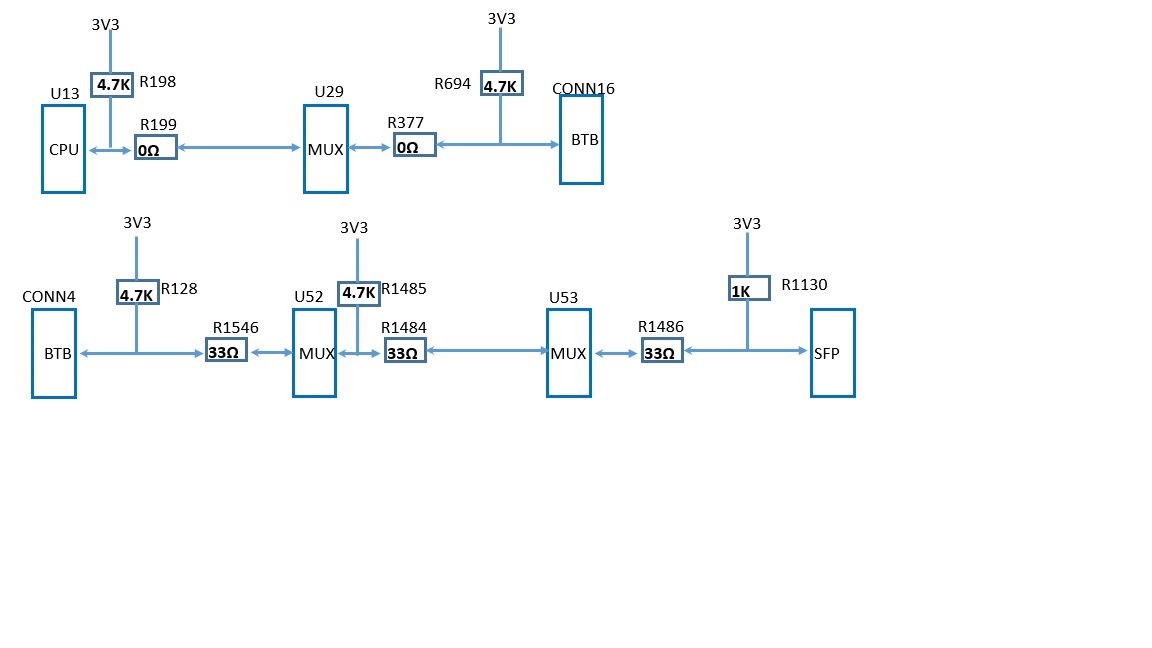Dear E2E,
I2C signal communicates between CPU and SFP transceiver through 5 pcs of PCA9548A in series as cascade.
They put pull-high circuit on each net from CPU to SFP transceiver.
The spec of SFP transceiver ask the minimum pull-high resistor.
our question is that what the effective pull-high resistor when we stands on the point of SFP transceiver?
i think the effective pull-high resistor is to parallel all of pull-high resistor from CPU to SFP. Am i right?
another question is that I see the internal topology of PCA9548A is passive FET. If so, why do we still need to put pull-high resistor on both input and output side?
BR,
Jason


